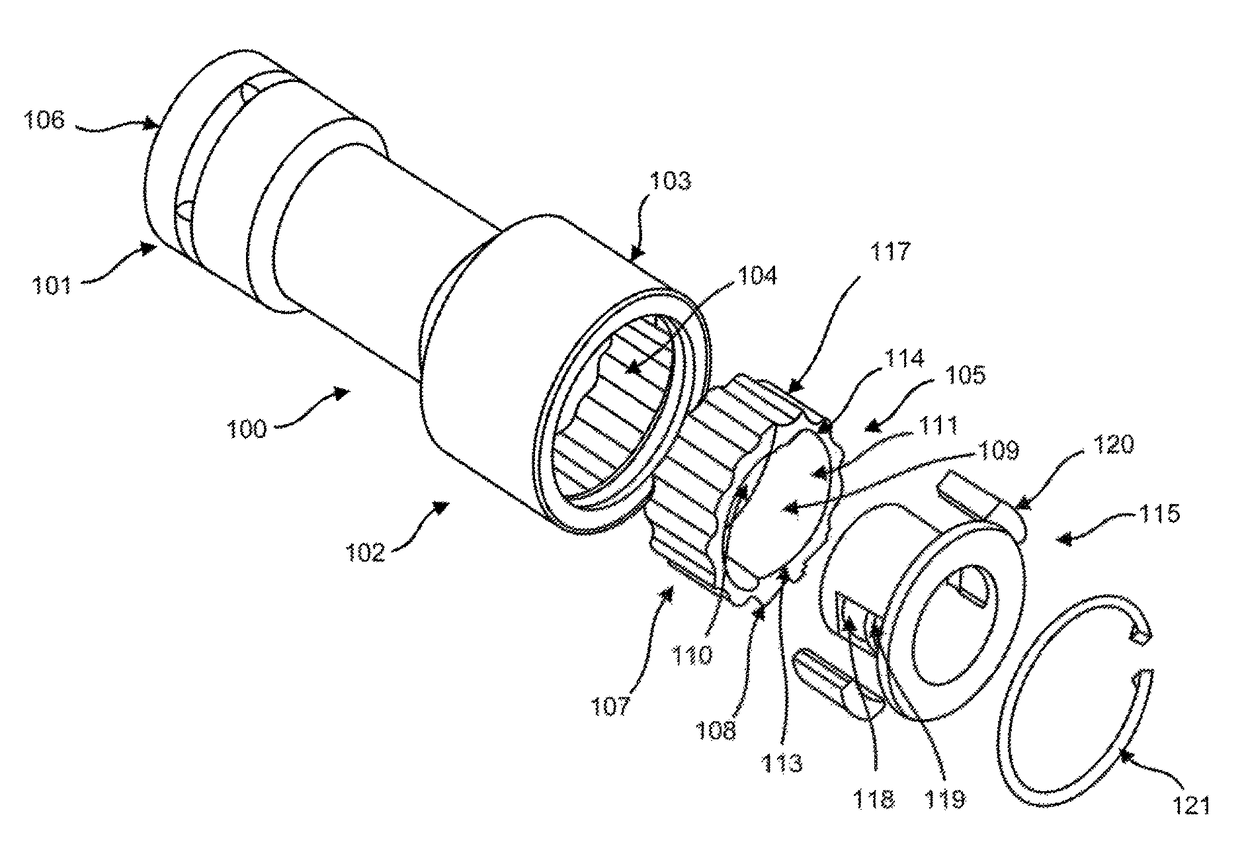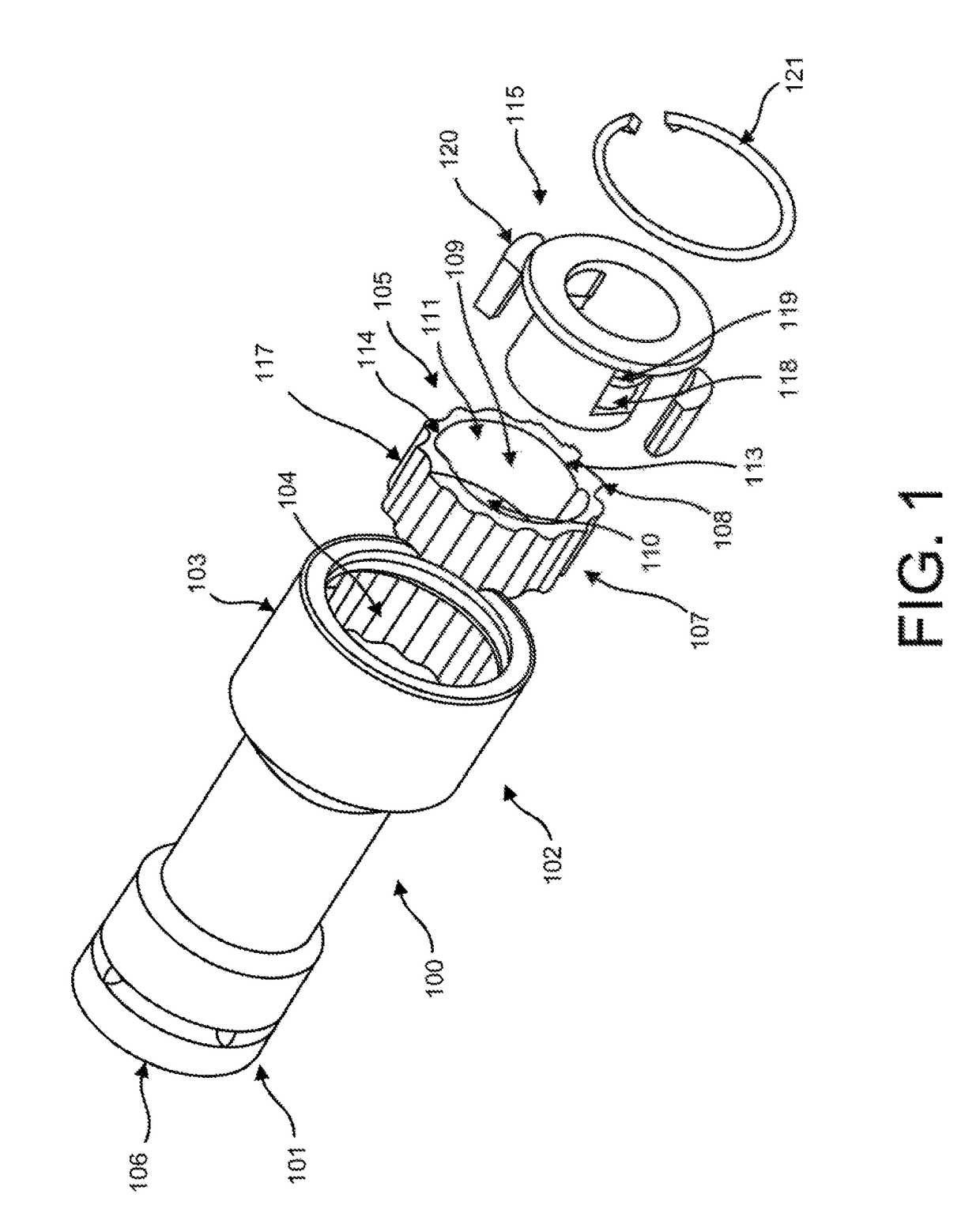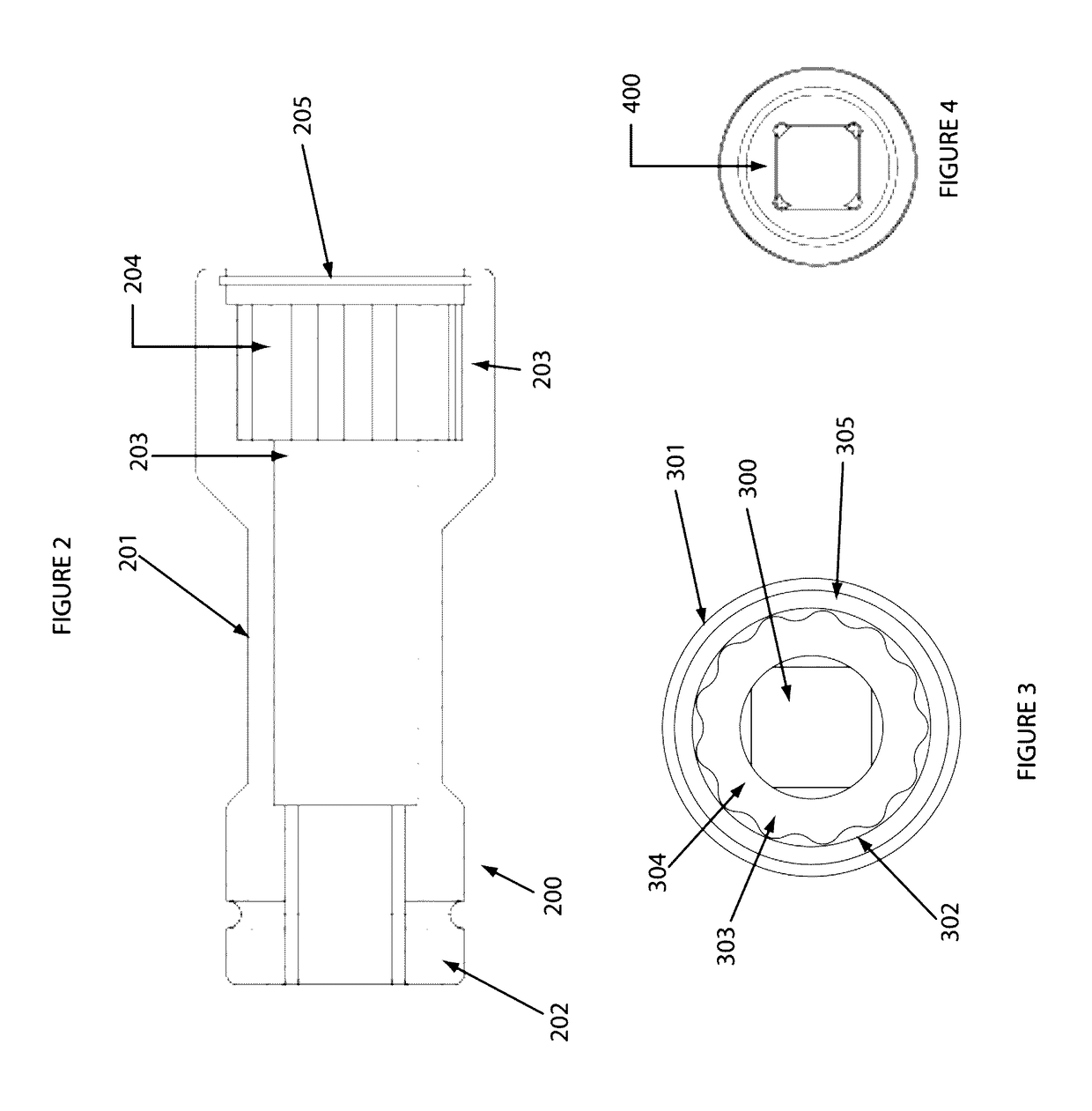Stud installation and removal tool and method of use
a technology for installing and removing studs, which is applied in the direction of wrenches, screwdrivers, manufacturing tools, etc., can solve the problems of stud removal, major time-consuming and financial draining experience, and damage to the housing, so as to eliminate all side-loading, accurately torque the fastener in place, and reduce the effect of side-loading
- Summary
- Abstract
- Description
- Claims
- Application Information
AI Technical Summary
Benefits of technology
Problems solved by technology
Method used
Image
Examples
Embodiment Construction
[0036]FIG. 1 of the drawings shows a preferred embodiment of the stud removal and installation tool, having a cylindrical body (100) having a first end (101) and a second end (102) with a hollow cylindrical housing (103) having a front face and side walls. The second end of the hollow interior of cylindrical housing (104) is lined with grooved teeth sized to allow cam sleeve (105) to sit flush inside cylindrical housing (101). The cam sleeve (105) is reversible such that it may be inserted into the body (100) in an orientation for installation of the threaded member or removal of the threaded member. The first end opposite end of the cylindrical body (100) is additionally hollow with a drive recess (106) formed to allow for coupling to an impact tool or driver device with which to apply rotational forces to the stud removal and installation tool. Also shown in FIG. 1 is the cam sleeve (105). The exterior surface of cam sleeve (107) is lined with teeth (108) sized to insert flush int...
PUM
| Property | Measurement | Unit |
|---|---|---|
| rotational force | aaaaa | aaaaa |
| sizes | aaaaa | aaaaa |
| temperatures | aaaaa | aaaaa |
Abstract
Description
Claims
Application Information
 Login to View More
Login to View More - R&D
- Intellectual Property
- Life Sciences
- Materials
- Tech Scout
- Unparalleled Data Quality
- Higher Quality Content
- 60% Fewer Hallucinations
Browse by: Latest US Patents, China's latest patents, Technical Efficacy Thesaurus, Application Domain, Technology Topic, Popular Technical Reports.
© 2025 PatSnap. All rights reserved.Legal|Privacy policy|Modern Slavery Act Transparency Statement|Sitemap|About US| Contact US: help@patsnap.com



